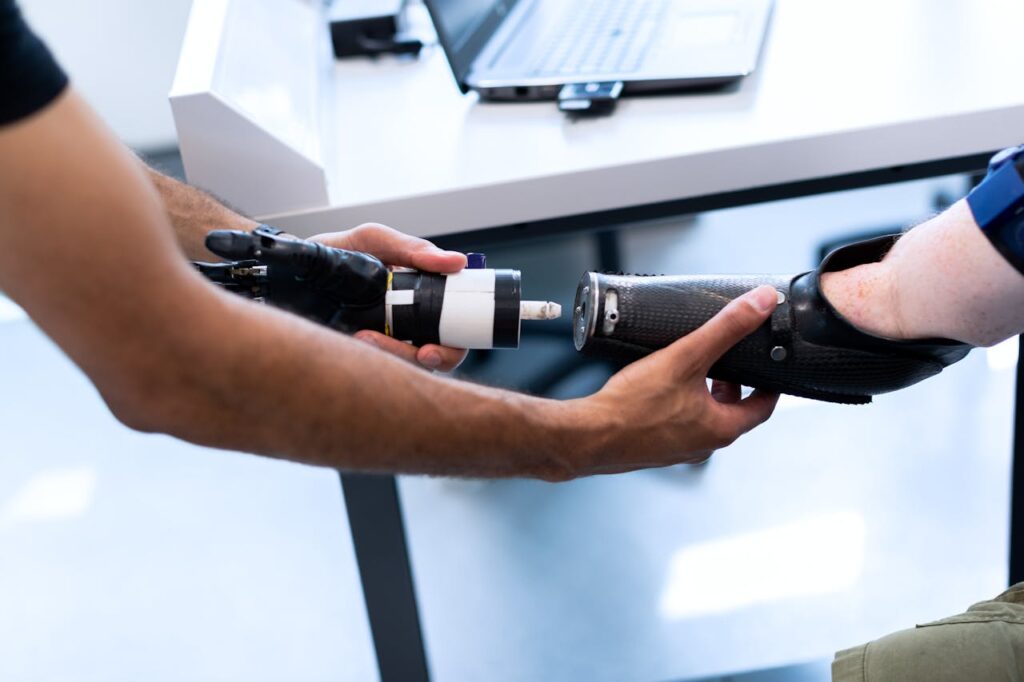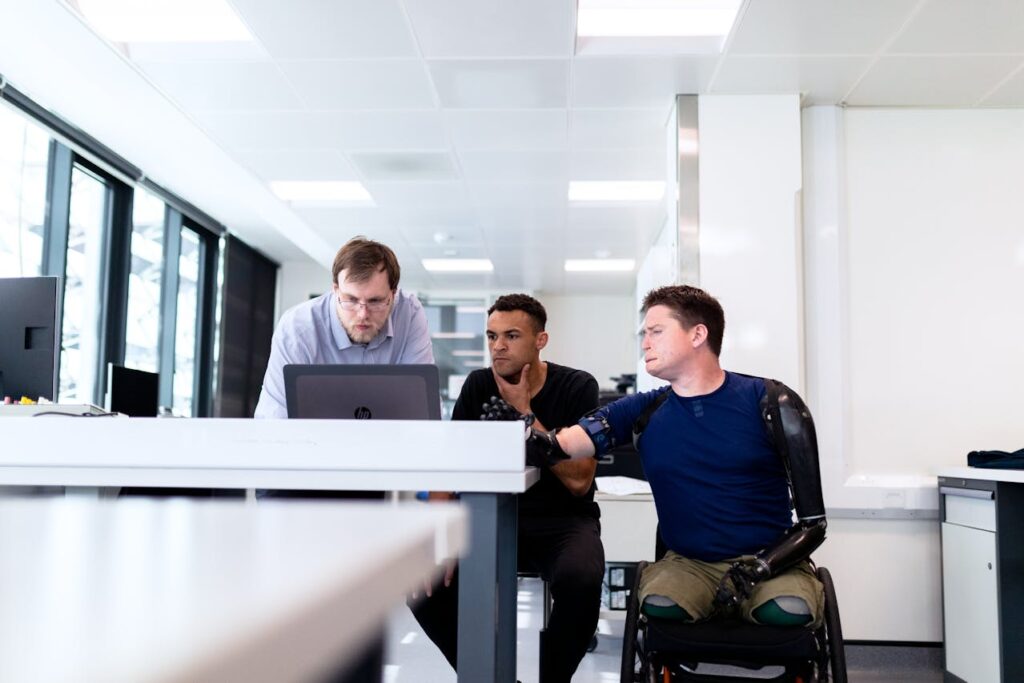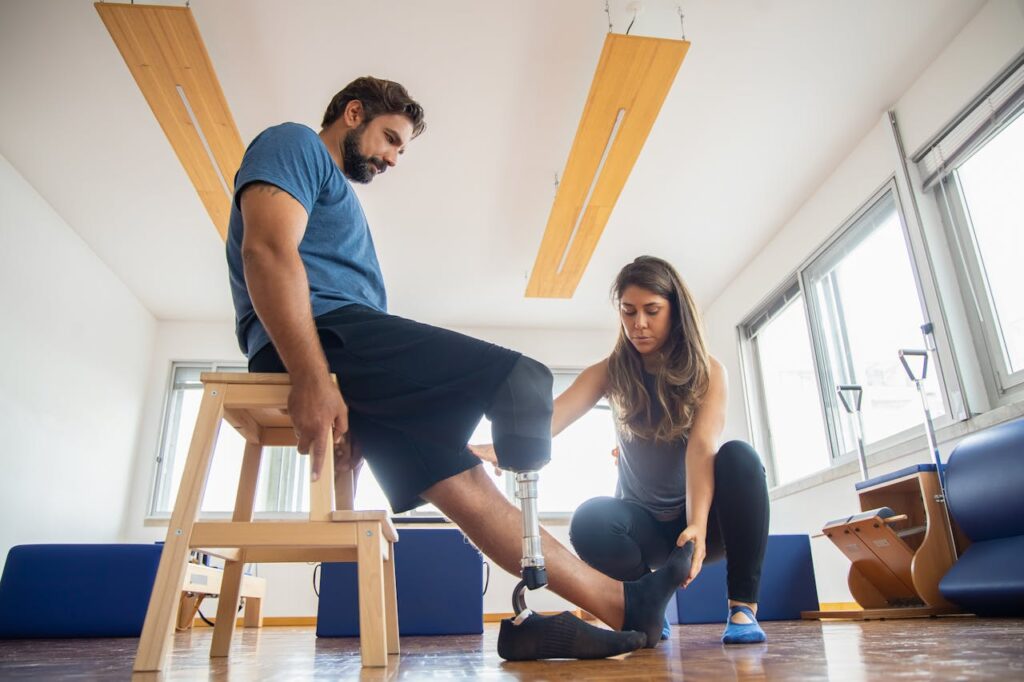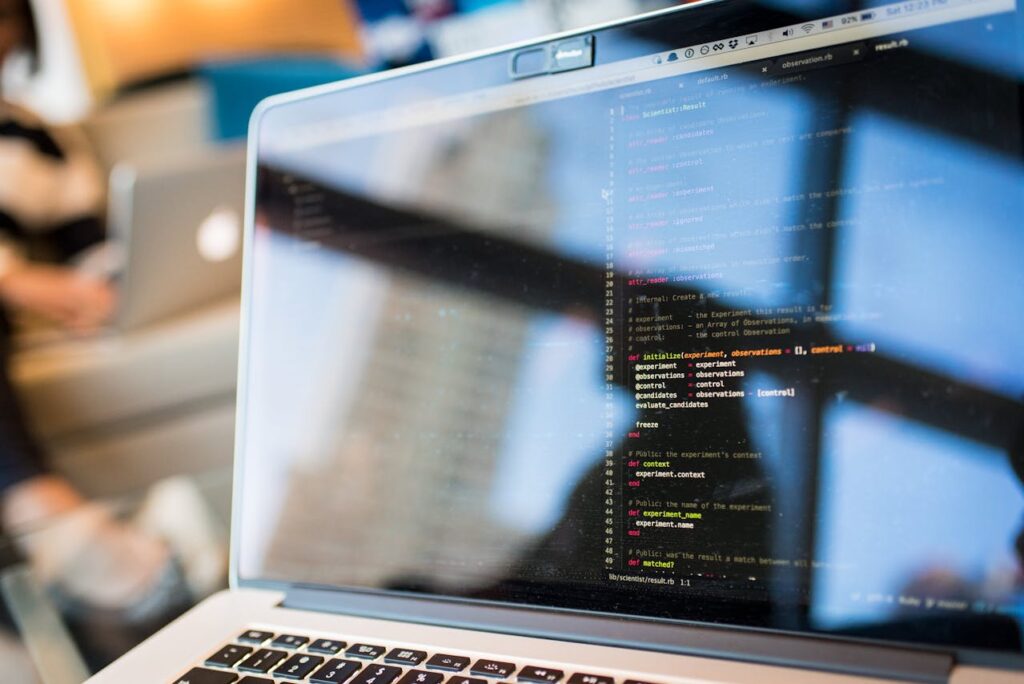Prosthetics have come a long way from simple wooden legs and hooks that once served as rudimentary replacements for lost limbs. Today, advancements in robotics are reshaping the field, bringing a new era of functionality, precision, and human connection to prosthetic devices. Robotics has transformed prosthetics into dynamic systems capable of mimicking natural movement, adapting to user needs, and providing a level of control that was once unimaginable.
The Evolution of Prosthetics Through Robotics
The integration of robotics into prosthetic design represents a significant leap forward in both technology and user experience. Unlike traditional prosthetics, which rely on fixed mechanical structures, robotic prosthetics incorporate advanced motors, sensors, and control systems to enable movement that closely resembles natural limb function.
From Passive to Active Devices
One of the most transformative aspects of robotics in prosthetics is the shift from passive to active devices. Passive prosthetics, while functional, rely on the user’s residual limb and external forces for movement. Robotic prosthetics, on the other hand, use powered components such as motors and actuators to generate motion.
For example, a robotic hand can grip, release, and even rotate objects with precision, enabling users to perform tasks like typing, cooking, or holding delicate items. Similarly, robotic legs can adjust their movements based on terrain, ensuring stability and reducing strain on the user.
For businesses, this shift toward active devices opens up opportunities to design prosthetics that cater to a wide range of activities, from everyday tasks to athletic performance. Highlighting these capabilities in marketing and product demonstrations can appeal to users seeking advanced functionality.
Robotics Enhancing Precision and Control
The incorporation of robotics into prosthetics has significantly improved the precision and control users have over their devices. This is achieved through a combination of advanced sensors, actuators, and intelligent algorithms that work together to replicate the natural movements of human limbs.
The Role of Sensors in Robotic Prosthetics
Sensors are the backbone of robotic prosthetics, providing the data needed to control movement accurately. These sensors detect inputs such as muscle signals, pressure, and position, translating them into commands that drive the prosthetic’s motors.
For example, myoelectric sensors placed on the residual limb can detect electrical signals generated by muscle contractions. These signals are then processed by the prosthetic’s control system, allowing the user to perform actions like gripping or pointing with minimal effort.
Pressure sensors further enhance functionality by enabling users to gauge the amount of force they are applying. This is particularly useful for tasks that require delicacy, such as picking up fragile objects or shaking hands.

Intelligent Algorithms for Adaptive Control
Robotic prosthetics also rely on intelligent algorithms to adapt to changing conditions and user needs. These algorithms analyze data from sensors in real time, making adjustments to movement, resistance, or speed as needed.
For instance, a robotic leg equipped with adaptive control algorithms can recognize when a user is climbing stairs and modify its motion to provide additional support. Similarly, a robotic hand can adjust its grip strength automatically based on the weight and texture of the object being held.
These adaptive capabilities create a more intuitive user experience, reducing the cognitive load required to operate the prosthetic. For businesses, developing and refining these algorithms can set their products apart in a competitive market, especially among users seeking devices that feel like natural extensions of their bodies.
Improving User Experience with Robotic Prosthetics
Robotics has not only improved the technical capabilities of prosthetics but also transformed the overall user experience. By prioritizing comfort, ease of use, and emotional connection, robotic prosthetics are helping users regain a sense of normalcy and independence.
Enhancing Comfort and Fit
Traditional prosthetics often struggle with issues related to fit and comfort, leading to discomfort and reduced usage. Robotic prosthetics address these challenges through innovations such as adjustable sockets, dynamic support systems, and lighter materials.
For example, robotic prosthetics can use motorized adjustments to create a snug yet comfortable fit, accommodating changes in the user’s residual limb over time. This reduces the need for frequent refittings and ensures that the device remains effective for daily use.
For businesses, focusing on comfort and fit during the design process can improve user satisfaction and foster long-term loyalty. Incorporating feedback from users during development ensures that the final product meets their needs effectively.

Enhancing the User Experience with Robotic Prosthetics
Robotic prosthetics are not just tools; they are extensions of the body, enabling users to engage more fully in their daily lives. By focusing on seamless integration, intuitive operation, and emotional well-being, robotic prosthetics are redefining the standard for assistive devices.
Building Emotional Connections Through Realistic Movement
One of the most profound advancements brought by robotics is the ability to replicate natural movements with remarkable accuracy. Robotic prosthetics can mimic the subtleties of human motion, such as the fluid bending of fingers or the synchronized stride of a leg.
This realism plays a vital role in helping users feel more connected to their prosthetic. The device no longer feels like an external accessory but rather an integral part of their identity. This emotional bond boosts confidence, enabling users to engage more openly in social and professional settings.
For businesses, investing in motion-capture studies and advanced modeling during the design phase can enhance the realism of robotic prosthetics. Highlighting these natural movements in marketing campaigns can resonate with users who value the psychological and social benefits of an integrated device.
Simplifying Operation with Intuitive Interfaces
Operating a robotic prosthetic can be daunting for new users. To address this, many devices now feature intuitive interfaces that simplify the learning curve. For example, some prosthetics use companion mobile apps or touchscreens that allow users to customize settings, adjust sensitivity, and monitor performance.
Voice-controlled features are also emerging, enabling users to issue commands with minimal physical effort. These innovations make robotic prosthetics more accessible and reduce the frustration often associated with mastering new technology.
Businesses that prioritize user-friendly designs can expand their market by appealing to users across age groups and technical skill levels. Offering educational resources, such as video tutorials or guided onboarding sessions, further enhances the user experience and ensures successful adoption.
Driving Rehabilitation with Robotics
Robotics is not only transforming prosthetic performance but also redefining the rehabilitation process. Modern robotic prosthetics serve as active participants in recovery, helping users rebuild strength, coordination, and confidence.
Supporting Physical Therapy
Rehabilitation often involves extensive physical therapy to help users adapt to their prosthetic. Robotic prosthetics equipped with sensors and data-tracking capabilities provide valuable insights during this process.
For instance, a robotic arm can monitor the user’s range of motion, strength, and activity levels over time, generating data that therapists can use to tailor treatment plans. Some devices even offer gamified exercises, turning rehabilitation into an engaging experience that motivates users to achieve their goals.
For businesses, collaborating with rehabilitation centers to integrate robotic prosthetics into therapy programs creates a strong value proposition. Demonstrating the benefits of these devices in clinical settings can also build credibility and drive adoption.

Accelerating Recovery with Adaptive Feedback
Robotic prosthetics with adaptive feedback systems actively assist users during their recovery journey. For example, a robotic leg might provide additional support when the user is regaining balance or learning to walk on uneven terrain.
This reduces the risk of injury and accelerates the transition to independent mobility.
For manufacturers, developing prosthetics that adapt to varying levels of user ability can broaden their appeal. Offering modular designs that allow for incremental upgrades—such as adding advanced features as the user’s strength improves—ensures that the prosthetic evolves alongside the user’s progress.
The Intersection of Robotics and Advanced Technologies
The integration of robotics with other cutting-edge technologies is driving prosthetics into a new era of innovation. By combining robotics with artificial intelligence, neural interfaces, and smart materials, prosthetic devices are achieving levels of sophistication that were once thought impossible.
Neural Interfaces: Bridging Mind and Machine
Neural interfaces allow robotic prosthetics to be controlled directly by the user’s nervous system, creating a seamless connection between the brain and the device.
This technology uses electrodes to detect neural signals and translate them into precise movements, enabling users to control their prosthetic with intuitive thought processes.
For example, a user could simply think about gripping a cup, and the robotic hand would execute the action in real time. This level of integration not only enhances functionality but also fosters a sense of embodiment, where the prosthetic feels like a true extension of the user’s body.
Businesses that invest in neural interface research can position themselves at the forefront of this transformative field. Partnering with academic institutions or technology firms to develop these systems can accelerate innovation while ensuring ethical and user-focused designs.
Smart Materials for Enhanced Functionality
Smart materials, such as shape-memory alloys and electroactive polymers, are revolutionizing the capabilities of robotic prosthetics. These materials can change shape, stiffness, or conductivity in response to external stimuli, allowing prosthetics to adapt dynamically to different conditions.
For example, a robotic hand made with smart materials might soften its grip when handling delicate objects and firm up when carrying heavier loads. Similarly, a prosthetic foot could adjust its flexibility to accommodate different terrains, providing enhanced comfort and stability.
For manufacturers, integrating smart materials into their designs offers a competitive edge, particularly for users seeking high-performance devices that adapt to their active lifestyles.
Robotics and the Future of Prosthetic Development
The integration of robotics into prosthetic development is not just enhancing current capabilities; it is shaping the future of assistive technologies in profound ways. With advancements in artificial intelligence, machine learning, and bioengineering, robotic prosthetics are becoming more sophisticated, responsive, and attuned to user needs.
Artificial Intelligence in Robotic Prosthetics
Artificial intelligence (AI) is playing a pivotal role in the evolution of robotic prosthetics. AI algorithms enable prosthetics to learn and adapt to user behavior, enhancing their functionality and intuitiveness.
By analyzing sensor data in real time, AI-powered prosthetics can predict user intentions, anticipate movements, and adjust their performance accordingly.
For example, an AI-enabled prosthetic leg can detect subtle changes in gait or posture, identifying when the user is fatigued or walking on uneven terrain.

The device then modifies its resistance, angle, or speed to ensure stability and comfort. Similarly, an AI-powered prosthetic hand can recognize the shape and texture of objects, adjusting its grip automatically to prevent slips or breakage.
For businesses, incorporating AI into robotic prosthetics represents an opportunity to create devices that are not only functional but also deeply personalized. Offering software updates that refine AI capabilities over time ensures that users continue to benefit from the latest advancements without needing to replace their devices.
The Role of Machine Learning
Machine learning, a subset of AI, takes robotic prosthetics a step further by enabling continuous improvement through data analysis. Unlike traditional programming, which relies on fixed instructions, machine learning allows prosthetics to evolve based on user interactions and environmental feedback.
For instance, a robotic arm can learn how a user prefers to hold certain objects, fine-tuning its grip strength and movement speed over time. Similarly, a prosthetic leg can adapt to changes in the user’s walking style, such as shifting weight distribution or adjusting to new footwear.
This adaptability not only enhances the user experience but also ensures that the prosthetic remains relevant as the user’s needs change. For manufacturers, investing in machine-learning capabilities ensures that their products stay ahead of user expectations and remain competitive in a rapidly advancing market.
Making Robotics Accessible and Affordable
While robotic prosthetics offer unparalleled functionality, their high cost remains a barrier for many users. Addressing this challenge requires businesses to adopt innovative strategies that balance cutting-edge technology with affordability.
Modular and Scalable Designs
One effective approach is to create modular prosthetics that allow users to customize and upgrade their devices over time. For example, a basic robotic arm could come with essential functions, while advanced features—such as AI integration or haptic feedback—could be added later as optional modules.
This scalability ensures that users can access high-quality prosthetics at an entry-level price, with the flexibility to enhance their devices as their needs or budget evolves. Businesses that adopt this model can appeal to a broader market while maintaining profitability.
Partnerships and Subsidies
Collaborating with healthcare providers, insurance companies, and government programs is another way to make robotic prosthetics more accessible.
Subsidized pricing models or reimbursement programs can significantly reduce the financial burden on users, ensuring that advanced prosthetics are available to those who need them most.
For manufacturers, these partnerships not only expand market reach but also enhance their reputation as socially responsible innovators. Actively engaging with nonprofit organizations and advocacy groups can further strengthen these efforts, fostering trust and goodwill within the prosthetics community.
Ethical Considerations in Robotic Prosthetics
As robotics continues to shape the future of prosthetic development, it raises important ethical questions that businesses must address. These include issues related to user autonomy, data privacy, and the equitable distribution of advanced technologies.
Empowering User Autonomy
Robotic prosthetics are highly intelligent devices, but it’s crucial that users retain control over their operation. Businesses should prioritize designs that allow individuals to customize their settings, override automated behaviors, and understand how their device operates.
Providing intuitive interfaces, such as companion apps or voice-controlled systems, empowers users to make informed decisions about their prosthetics. For companies, emphasizing autonomy and user empowerment can build trust and differentiate their products in a competitive market.
Protecting Data Privacy
Robotic prosthetics often collect sensitive data, such as movement patterns, muscle signals, and environmental interactions. Ensuring the privacy and security of this information is essential to maintaining user trust.
Implementing robust encryption protocols and transparent data usage policies can reassure users that their information is safe. Businesses should also comply with global data protection standards, such as GDPR or HIPAA, to demonstrate their commitment to ethical practices.

Frontiers of Robotics in Prosthetics
Robotics in prosthetics has already transformed lives by restoring mobility and independence. Yet, the potential of this technology continues to expand. With the integration of emerging technologies like biofeedback, augmented reality, and regenerative medicine, the future of prosthetics promises to be even more dynamic and user-centered.
Biofeedback Integration for Enhanced Awareness
Biofeedback systems are becoming an integral part of robotic prosthetics, allowing users to receive real-time sensory information from their devices. For example, biofeedback can enable a prosthetic hand to communicate the pressure or texture of an object through vibrations or other sensory cues.
This connection bridges the gap between the prosthetic and the user’s body, fostering a deeper sense of control and confidence.
For businesses, investing in biofeedback technology not only improves functionality but also creates opportunities to market devices as cutting-edge solutions that enhance the user’s sensory experience.
Augmented Reality for Training and Adaptation
Augmented reality (AR) is playing an increasingly important role in prosthetic development, particularly in training and adaptation. AR platforms can simulate real-world environments, helping users learn how to operate their prosthetics in various scenarios.
For instance, an AR application might guide a new user through tasks like gripping objects or maintaining balance on uneven surfaces.
For businesses, incorporating AR-based training tools can enhance the onboarding process, reducing the learning curve for users and improving satisfaction. AR also offers potential in customer support, allowing manufacturers to provide remote assistance through interactive, real-time visuals.
Regenerative Prosthetics and Bioengineered Tissues
The integration of robotics with regenerative medicine is an exciting frontier in prosthetic development. Researchers are exploring the use of bioengineered tissues that can be incorporated into robotic prosthetics, creating devices that not only move naturally but also heal and adapt like living tissue.
For instance, prosthetics with bioengineered skin could restore a sense of touch while protecting internal components. Similarly, the combination of robotics with 3D-printed bone or cartilage structures could create prosthetics that seamlessly integrate with the body’s natural framework.
Businesses that invest in partnerships with bioengineering firms and research institutions can position themselves as pioneers in this transformative area, offering products that redefine the boundaries between artificial and biological limbs.
The Role of Collaboration in Advancing Robotic Prosthetics
The complexity of robotic prosthetics demands collaboration across disciplines, industries, and user communities. For businesses, fostering partnerships with technologists, medical professionals, and end-users is critical to driving innovation and creating devices that meet real-world needs.
Partnering with Research Institutions
Academic research plays a pivotal role in advancing robotics and prosthetic technologies. Businesses that partner with universities or research labs can gain access to cutting-edge developments in areas like neural interfaces, machine learning, and advanced materials.
These collaborations not only accelerate product innovation but also provide a foundation for long-term growth and thought leadership in the field.

Engaging with User Communities
Users are the ultimate test of any prosthetic device’s success. Engaging directly with user communities through focus groups, feedback sessions, and pilot programs ensures that designs align with their needs and expectations.
For example, gathering input from athletes might inspire the development of sports-specific prosthetics with enhanced durability and responsiveness. Similarly, working with users in diverse regions can inform designs that accommodate cultural preferences or environmental challenges.
For businesses, this user-centered approach builds trust and loyalty while providing invaluable insights for continuous improvement.
Conclusion
Robotics is redefining the landscape of modern prosthetic development, turning static devices into dynamic, intelligent systems that enhance mobility, functionality, and quality of life.
From replicating natural movements to fostering deep emotional connections, robotic prosthetics are not just tools—they are transformative extensions of the human body.
For businesses, the integration of robotics into prosthetics offers an extraordinary opportunity to lead in innovation while making a profound impact on users’ lives.
By embracing advanced technologies such as AI, biofeedback, and regenerative materials, companies can deliver devices that are not only cutting-edge but also deeply attuned to user needs.



